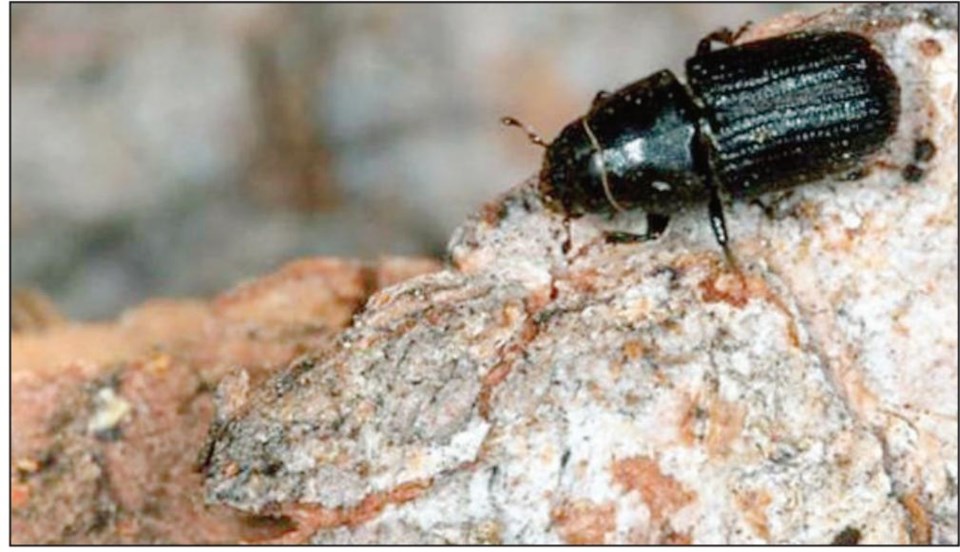The future of B.C.'s timber industry is at stake and the provincial government and forestry companies must make changes to stave off a dramatic fall brought on by the spread of the mountain pine beetle, a government report said Wednesday.
The report said the pine beetle will decimate up to 70 per cent of the central Interior's marketable timber by 2021 if the report's 22 recommendations are not implemented.
"There are some very challenging decisions that companies are going to have to make in terms of what their expectations will be in the future of forest markets and fibre supply," said MLA John Rustad, who chaired the report.
The report, by the Special Committee on Timber Supply, examined the impact of the beetle in B.C.'s forests.
It said the B.C. government should increase the timber supply and value of pine beetle wood, improve forest management, engage local communities and First Nations in future forest plans and find more ways to grow more wood.
Over the next 10 years, even when the recommended changes are implemented, the timber supply in the Interior will decrease and when beetle-killed pine can no longer be salvaged, the mature timber supply will be reduced and the effects may be felt for 50 years, the report said.
That could land a devastating blow to small communities that rely on forestry. Two years ago, Central 1 Credit Union predicted that up to 11,000 jobs could disappear in 20 years due to the pine beetle.
The provincial committee did not tally eventual job losses in its report.
But the report offered short-term hope for the community of Burns Lake.
In January, the community was emotionally and economically battered when an explosion at the local mill killed two workers and destroyed the operation.
The mill's owner, Hampton Affiliates, said it would need at least one million cubic metres of timber annually to justify rebuilding the mill.
Chief Albert Gerow, whose Ts'il Kaz Koh band is a partner in the mill, said the community was anxiously awaiting the report because the timber supply figures could dictate the town's future.
The report showed the amount of timber needed to rebuild is available, but Gerow said as the pine beetle-affected trees wither away, the supply for lumber products dwindles.
"What will happen is, over time, it may drop to 500,000 cubic metres annually . . . so that would be half of what Hampton would require," said Gerow.
He said the community has about five years until that happens and he was disappointed the report did not include any information on diversifying mill economies to use trees unable to be milled into lumber.
"As the saw-log continues to diminish, the biomass fibre that's available continually increases," he said. "There's a huge need to diversify to an other-thansaw-log industry like the biomass industry, wood pellet plant, that type of thing."
B.C.'s minister of Forestry, Lands and Resource Operations, Steve Thomson, said the province has explored such options in anticipation of a depleted stock of timber suited for milling.
"We've had to work with the bioeconomy committee, we're looking at licensing and tendering opportunities," Thomson said.
"The full utilization of that - fibre, bio energy, biomass - will need to be a key part of [mitigating economic impacts]."
Another recommendation made by the report was processing more wood products in B.C. instead of shipping raw logs to foreign operations.
Thomson said that approach would help, but the number of raw logs shipped out is not enough to cause much of an impact on the economy.
"In the Interior areas, it's less than one per cent of the total harvest, so the overall contribution that could make to the mid-term timber supply in this region is pretty small overall," he said.
Within the next week, the ministry will review the report and formulate a response and action plan.



